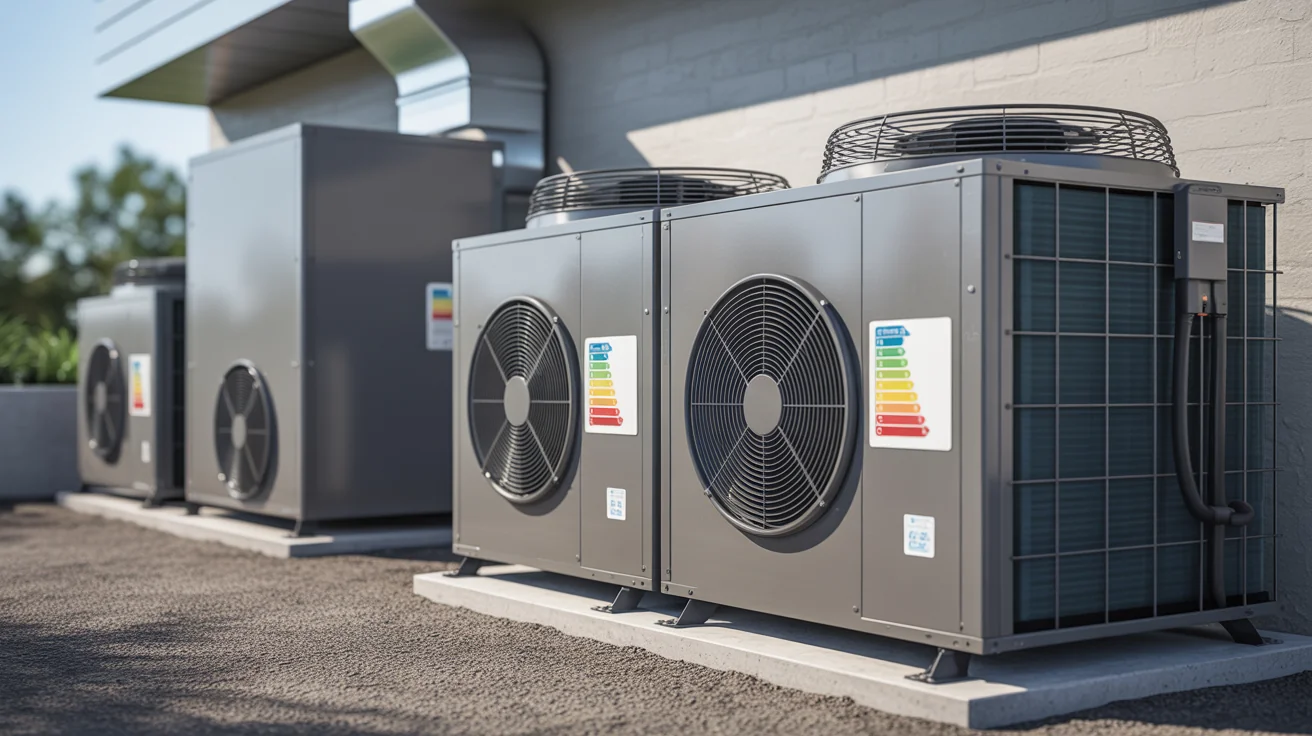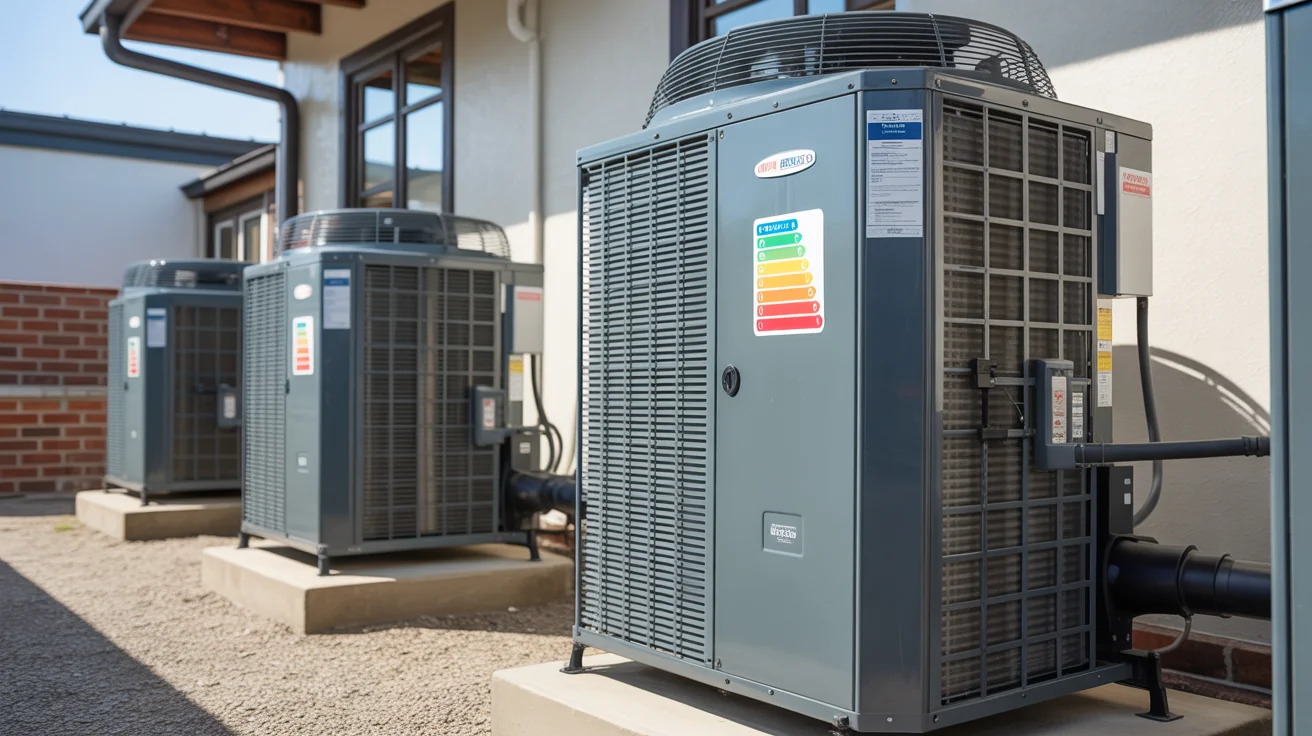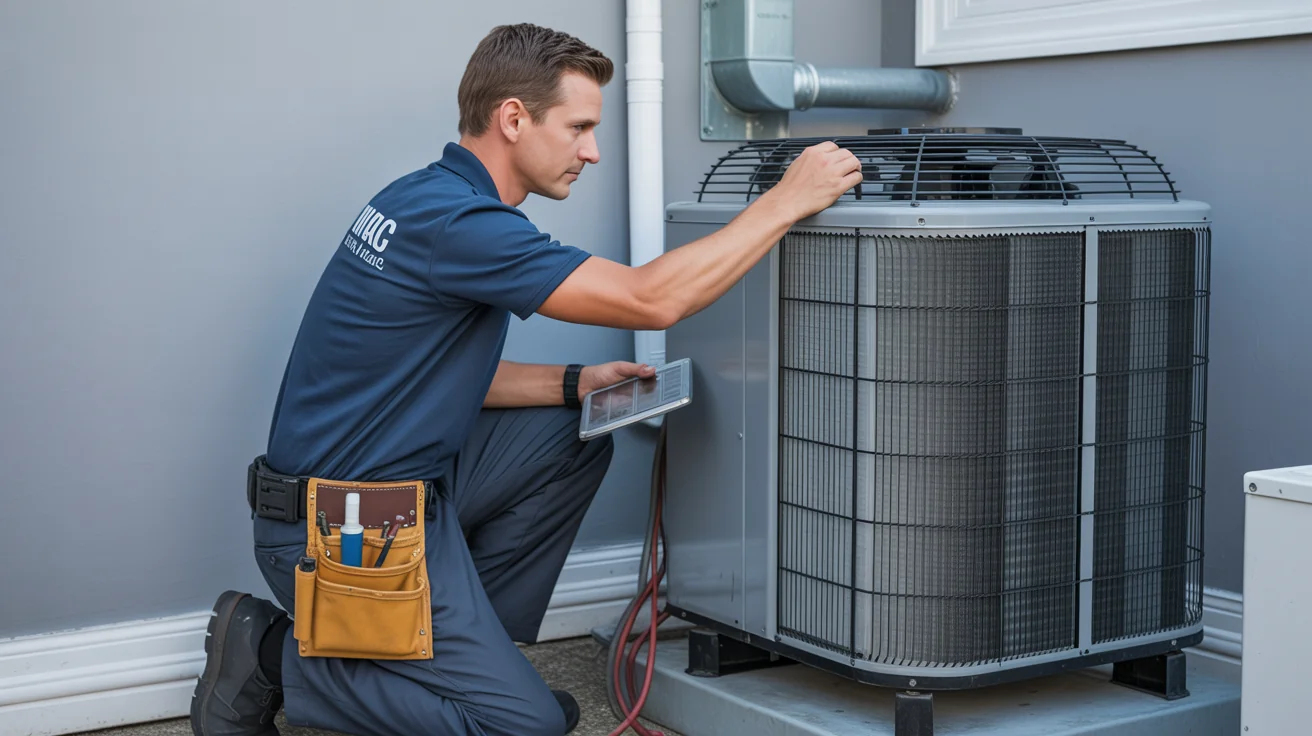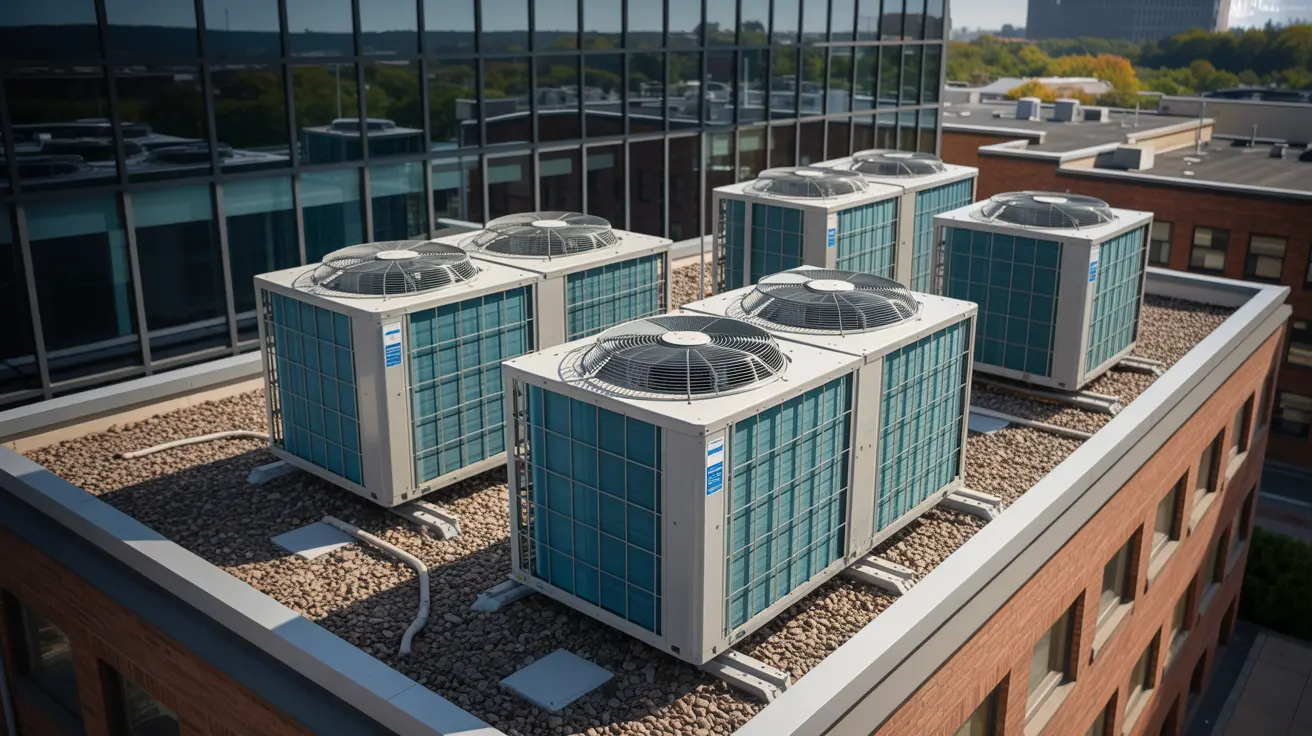Commercial HVAC Retrofits and Upgrades: North Texas Modernization Guide
Complete guide to commercial HVAC retrofits and upgrades for North Texas businesses. Modernization strategies, technology upgrades, and ROI analysis for improved performance and efficiency.

- The Strategic Value of Commercial HVAC Retrofits
- North Texas Retrofit Market Drivers
- Retrofit Assessment and Planning
- Retrofit Opportunity Identification
- Equipment Replacement and Upgrade Strategies
- High-Efficiency Equipment Selection
- Building Automation and Control Upgrades
- Smart Building Technology Integration
+ 12 more sections below...
- The Strategic Value of Commercial HVAC Retrofits
- North Texas Retrofit Market Drivers
- Retrofit Assessment and Planning
- Retrofit Opportunity Identification
- Equipment Replacement and Upgrade Strategies
- High-Efficiency Equipment Selection
- Building Automation and Control Upgrades
- Smart Building Technology Integration
+ 12 more sections below...
The Strategic Value of Commercial HVAC Retrofits
Learn more about Commercial HVAC.
Commercial HVAC retrofits and upgrades in North Texas represent strategic investments that can dramatically improve energy efficiency, reduce operating costs, enhance comfort, and increase property values. With aging building stock, evolving technology, and increasing energy costs, systematic modernization becomes essential for competitive business operations.
I’ve watched too many business owners struggle with aging HVAC systems, throwing money at emergency repairs while watching their energy bills climb. Last year, I helped retrofit a 30-year-old office building’s HVAC system. The owner was spending $18,000 annually on repairs plus outrageous utility bills. After a comprehensive retrofit, his energy costs dropped 35%, repairs became minimal, and tenant satisfaction soared. The entire investment paid for itself in just over two years.
This complete guide provides systematic approaches to retrofit planning, technology selection, and set upation strategies for optimal results in North Texas commercial buildings.
North Texas Retrofit Market Drivers
North Texas commercial building owners face mounting pressure from multiple directions. Rising energy costs hit older buildings especially hard - I’ve seen monthly utility bills jump 40% in just two years for buildings with outdated HVAC. Nearly half of our commercial building stock is over 20 years old, using equipment that’s inefficient by today’s standards. But the financial case for retrofits has never been stronger. Utility rebate programs now cover 20-40% of upgrade costs. Modern, efficient buildings command higher rents and attract quality tenants who value comfort and sustainability. Properties with recent HVAC retrofits consistently appraise 10-15% higher than comparable buildings with aging systems.
Regulatory pressure continues building for commercial property owners. Energy code updates now require efficiency improvements during major renovations. Air quality regulations have tightened significantly, especially post-pandemic. Many corporations now have sustainability mandates that affect their real estate decisions - they won’t lease space in inefficient buildings. Municipal carbon reduction goals are pushing policy changes that could eventually mandate efficiency upgrades. Green building certifications aren’t just nice-to-have anymore; they’re becoming lease requirements for many tenants.
Retrofit Assessment and Planning
Comprehensive Building Assessment
Energy Audit and Analysis: Systematic assessment identifies retrofit opportunities and priorities.
Assessment Components: Comprehensive building assessment reveals exactly where your money should go for maximum impact. Energy consumption analysis compares your building to similar properties and identifies the biggest opportunities. Equipment condition assessment often reveals systems operating at 60-70% of original capacity due to age and poor maintenance. Building envelope evaluation frequently uncovers insulation problems and air leaks that waste enormous amounts of energy. Control system assessment usually shows outdated controls that can’t optimize modern equipment. Indoor air quality review has become critical for tenant health and satisfaction, especially in today’s environment.
Performance Gap Analysis:
Performance gap analysis compares current vs. optimal performance to identify efficiency improvement potential and quantify available savings opportunities. Comfort and air quality issues require attention to address occupant satisfaction problems that affect productivity and tenant retention. Maintenance cost analysis evaluates ongoing maintenance and repair expenses that may indicate equipment replacement needs. Capacity adequacy assessment determines if existing systems can meet current and future building demands as usage patterns evolve. Technology obsolescence evaluation identifies outdated systems needing replacement to maintain competitiveness and efficiency.
Retrofit Opportunity Identification
High-Impact Retrofit Categories: Equipment replacement typically offers the biggest bang for your retrofit buck. Replacing 20-year-old rooftop units with high-efficiency models can cut cooling costs by 30-40%. Building automation upgrades transform dumb buildings into smart ones that optimize themselves continuously. I’ve seen automation systems pay for themselves in 18 months just through improved scheduling and setpoint control. Ductwork improvements might not be glamorous, but sealing leaks and improving airflow can boost system performance 20%. Modern control systems can optimize existing equipment to perform like new. Energy recovery systems capture waste heat and use it productively, sometimes cutting ventilation energy costs in half.
Cost-Benefit Prioritization: Retrofit project prioritization begins with simple payback analysis, giving highest priority to projects with 1-3 year paybacks that provide immediate return on investment. Life cycle cost analysis provides comprehensive long-term cost and benefit evaluation that considers total ownership costs over equipment life. Energy savings potential identifies projects with the highest energy reduction impact that provide ongoing operational cost benefits. Comfort improvement impact addresses critical comfort and air quality issues that affect occupant satisfaction and productivity. Maintenance reduction potential focuses on projects that reduce ongoing maintenance costs while improving system reliability and performance.
Equipment Replacement and Upgrade Strategies
HVAC Equipment Modernization
Equipment Replacement Triggers: Age-based replacement becomes necessary when equipment reaches 15-20 years old and approaches the end of its useful life, typically showing declining efficiency and increasing repair frequency. Efficiency improvements available in newer equipment often offer significant efficiency gains that justify replacement through reduced operating costs. Reliability issues manifest through frequent repairs and downtime that indicate equipment replacement provides better value than continued maintenance. Capacity inadequacy occurs when existing equipment cannot meet current building demands due to space modifications, increased occupancy, or changed use patterns. Technology obsolescence affects older equipment lacking modern features and capabilities that are now standard, limiting performance optimization and integration potential.
Modern Equipment Technologies: Today’s commercial HVAC equipment makes 20-year-old systems look primitive. Variable refrigerant flow systems provide individual zone control while using 20-30% less energy than conventional systems. Magnetic bearing chillers eliminate the friction and maintenance issues of traditional chillers while improving efficiency dramatically. Heat pump systems work exceptionally well in North Texas, providing efficient heating and cooling in one unit. Variable speed drives on fans and pumps adjust output to actual needs instead of running at full speed constantly. Smart controls learn your building’s patterns and optimize operation automatically, often finding savings that human operators miss.
High-Efficiency Equipment Selection
Premium Efficiency Technologies:
Modern high-efficiency equipment selection prioritizes modulating equipment that provides capacity matching for improved efficiency and comfort through precise load following. Heat recovery systems capture waste heat for space heating and hot water production, dramatically improving overall building efficiency. Advanced heat exchangers provide enhanced heat transfer and reduced energy consumption through improved materials and design. Premium efficiency motors deliver 2-8% efficiency improvement over standard motors while often providing better reliability and longer service life. Integrated controls include equipment with built-in optimization and monitoring capabilities that continuously improve performance.
Equipment Integration Strategies: System compatibility planning ensures new equipment integrates seamlessly with existing systems, controls, and infrastructure without requiring extensive modifications. Phased replacement strategies replace equipment in carefully planned phases that minimize business disruption while maintaining adequate capacity throughout the retrofit process. Redundancy planning maintains backup capacity during equipment replacement to ensure continuous operation and prevent business interruption. Performance optimization involves configuring integrated systems for optimal efficiency and performance through proper sizing, controls integration, and operational coordination. Future expansion planning anticipates potential capacity or capability needs that may arise, ensuring retrofit investments accommodate business growth and changing requirements.
Building Automation and Control Upgrades
Control System Modernization
Legacy Control System Limitations: Limited functionality in older control systems means basic operation without optimization capabilities that modern buildings require for efficient operation. Poor integration prevents effective coordination of multiple systems, resulting in energy waste and comfort problems. Lack of monitoring means no performance tracking or energy consumption analysis, making optimization and troubleshooting extremely difficult. Manual operation requirements force constant manual adjustment and prevent automated responses to changing conditions. No remote access capability eliminates the ability to monitor or control systems from off-site locations, preventing rapid response to problems and limiting operational flexibility.
Modern Building Automation Benefits: Modern building automation systems transform buildings from energy wasters to efficiency champions. Integrated system control coordinates HVAC, lighting, and security systems to minimize energy waste. Energy optimization algorithms continuously adjust operation based on occupancy, weather, and utility rates. Predictive maintenance features monitor equipment condition and schedule service before failures occur. Remote monitoring lets you check your building’s performance from anywhere and receive instant alerts about problems. Performance analytics provide detailed reports that help identify additional efficiency opportunities and demonstrate retrofit success to stakeholders.
Smart Building Technology Integration
IoT and Connected Systems: Modern retrofits incorporate Internet of Things technology for enhanced performance and monitoring.
Smart Building Features: Sensor networks provide comprehensive occupancy, temperature, humidity, and air quality monitoring that enables precise control and optimization based on actual conditions. Machine learning capabilities create adaptive controls that learn building patterns and improve performance automatically over time. Mobile integration through smartphone apps allows complete monitoring and control from anywhere, providing instant access to system status and problem alerts. Cloud connectivity enables advanced remote monitoring and data analytics that identify optimization opportunities and maintenance needs. Integration platforms connect HVAC systems with lighting, security, and other building systems to coordinate operation and maximize efficiency.
Advanced Control Strategies: Demand-controlled ventilation provides fresh air based on actual occupancy levels rather than design maximums, significantly reducing energy consumption while maintaining air quality. Optimal start and stop systems use intelligent algorithms to determine the best system startup and shutdown timing based on building thermal mass and weather conditions. Economizer optimization maximizes use of free cooling when outdoor conditions allow, reducing mechanical cooling energy consumption. Peak demand management includes automatic load shedding during utility peak periods to minimize demand charges that can represent significant portions of energy costs. Fault detection and diagnostics provide automatic problem identification and immediate alerts that enable rapid response before minor issues become major failures.
Energy Recovery and Efficiency Improvements
Heat Recovery System Retrofits
Energy Recovery Applications: Heat recovery systems capture waste energy for reuse, providing significant efficiency improvements.
Recovery System Types: Heat recovery systems capture energy that would otherwise be wasted and put it to productive use. Heat recovery ventilators capture heat from exhaust air and use it to pre-condition incoming fresh air. Energy recovery ventilators go further, recovering both heat and moisture. Waste heat recovery captures heat from servers, manufacturing equipment, and other sources. Heat pump water heating systems use waste heat to provide domestic hot water efficiently. Thermal wheels work well for large applications where significant amounts of exhaust air can be processed. I’ve seen heat recovery systems reduce ventilation energy costs by 40-60% in North Texas buildings.
Recovery System Benefits: Energy savings of 20-60% in heating and cooling energy result from capturing waste heat that would otherwise be lost to the atmosphere. Improved air quality comes from enhanced ventilation rates without the typical energy penalty associated with conditioning large amounts of outdoor air. Equipment downsizing becomes possible when heat recovery reduces heating and cooling loads, allowing smaller, less expensive equipment selection. Operating cost reductions provide immediate cash flow improvement through lower energy bills that continue throughout system life. Environmental benefits include significantly reduced energy consumption and carbon emissions that support sustainability goals while reducing utility costs.
Ductwork and Air Distribution Improvements
Ductwork Retrofit Opportunities: Duct sealing reduces air leakage that commonly wastes 15-30% of conditioned air, improving both efficiency and comfort while reducing energy costs. Insulation upgrades enhance thermal performance of ductwork by preventing heat gain and loss in unconditioned spaces, particularly important in hot climates. Airflow balancing optimizes air distribution throughout buildings to eliminate hot and cold spots while ensuring adequate ventilation to all areas. Variable air volume conversion transforms wasteful constant volume systems into efficient VAV systems that adjust airflow based on actual demand. Zone control addition provides individual area temperature control that improves comfort while reducing energy consumption in unoccupied or lightly occupied spaces.
Air Distribution Enhancement: Ductwork improvements often provide the best return on retrofit investment because they’re relatively inexpensive but highly effective. Sealing duct leaks can reduce energy consumption 15-25% by ensuring conditioned air reaches occupied spaces instead of heating or cooling unoccupied areas. Proper air distribution eliminates hot and cold spots that plague many commercial buildings. Improved airflow reduces equipment stress and extends system life. Better ventilation distribution ensures adequate fresh air reaches all occupants. I’ve seen buildings where simple ductwork improvements eliminated comfort complaints and reduced energy bills simultaneously.
Financial Analysis and Incentive Programs
Retrofit Investment Analysis
Cost Categories and Ranges: Retrofit investment ranges vary dramatically based on building size and scope, but the returns are consistently attractive. Small commercial buildings typically invest $15,000-75,000 for equipment replacement that can reduce operating costs $3,000-8,000 annually. Medium commercial buildings spend $50,000-300,000 on comprehensive retrofits that often save $15,000-40,000 annually in energy costs alone. Large buildings may invest $200,000-1M+ but see proportionally larger savings. Control system upgrades cost $25,000-150,000 but typically pay for themselves in 2-4 years. Energy recovery systems cost $30,000-200,000 but can reduce ventilation energy costs 40-60%.
Return on Investment Analysis: Energy cost savings provide immediate annual returns through reduced energy consumption that continues throughout equipment life with compounding value. Demand charge reductions result from efficient equipment that reduces peak electrical demand, often providing substantial monthly savings in commercial rate structures. Maintenance cost reductions come from modern equipment reliability and advanced diagnostics that prevent failures while reducing service requirements. Productivity improvements result from enhanced comfort and indoor air quality that increase occupant satisfaction and performance. Property value enhancement occurs through increased building efficiency and modern systems that attract tenants and command higher rents or sale prices.
Available Incentive Programs
Utility Incentive Programs: North Texas utilities offer substantial rebates for commercial retrofits.
Major Incentive Programs: North Texas offers some of the best retrofit incentives in the country, making projects financially attractive. Oncor’s Energy Efficiency Program provides substantial equipment rebates - often $500-2,000 per ton of high-efficiency equipment installed. Retail electric providers offer custom rebates and special rates for efficient buildings. Municipal utilities in some areas provide additional local incentives. Federal tax credits can cover 10-30% of qualifying improvements like energy recovery systems and high-efficiency equipment. State programs provide additional support for qualifying projects. I’ve helped clients stack multiple incentive programs to cover 40-50% of total retrofit costs.
Financing Options: Utility on-bill financing provides convenient financing through utility bills that often requires no upfront costs while payments are structured to be less than energy savings. PACE financing offers property assessed clean energy long-term financing that stays with the property and provides attractive interest rates for qualifying improvements. Energy service agreements include third-party financing with guaranteed savings where the service provider assumes performance risk and guarantees specific cost savings. Equipment financing through traditional loans and leases provides straightforward financing options with competitive rates and flexible terms. Power purchase agreements involve third-party ownership with performance contracts where the provider owns and maintains equipment while the customer purchases the energy output.
Payback and ROI Calculations
Typical Retrofit ROI Results: Retrofit ROI examples from actual North Texas projects demonstrate consistent returns. Equipment replacement projects typically achieve 25-40% annual ROI with 3-5 year paybacks. Building automation provides even better returns - 30-50% annual ROI with 2-4 year paybacks because the savings are immediate and ongoing. Energy recovery systems offer 20-30% annual ROI with 3-7 year paybacks, depending on ventilation requirements. Comprehensive retrofits that address multiple systems often provide the best overall returns - 40-60% annual ROI with 2-3 year paybacks because the systems work together synergistically.
Value Enhancement Analysis: Operating cost reductions provide $10,000-100,000+ annual savings potential through improved efficiency, reduced maintenance, and optimized system operation. Property value increases of 5-15% result from modern, efficient systems that enhance building desirability and marketability. Tenant satisfaction improves through better comfort and reliability, leading to higher occupancy rates and lease premiums that improve property cash flow. Competitive advantage emerges from modern, efficient buildings that attract quality tenants and command premium rents in competitive markets. Risk reduction minimizes the potential for equipment failures and business disruption that could result in tenant dissatisfaction and lease terminations.
Implementation Planning and Project Management
Retrofit Project Planning
Systematic Implementation Process: Successful retrofit implementation follows a systematic process that minimizes disruption while maximizing results. Assessment and planning involves comprehensive building evaluation to identify the highest-impact opportunities. Design and engineering develops professional specifications that ensure optimal performance and code compliance. Financing and approvals secures rebates and permits before work begins. Construction and installation is carefully scheduled to minimize business disruption - often working nights and weekends for occupied buildings. Commissioning and optimization ensures all systems operate as designed and achieve projected savings. Ongoing monitoring and maintenance protects your investment and ensures continued performance.
Business Continuity Planning: Phased implementation completes work in carefully planned phases that minimize business disruption while maintaining adequate building comfort throughout the retrofit process. Temporary systems provide essential cooling and heating during major work that would otherwise leave occupants without climate control. After-hours scheduling performs the most disruptive work during non-business hours to minimize impact on daily operations and occupant comfort. Communication planning maintains regular updates to tenants and employees about project progress, schedule changes, and any temporary inconveniences. Contingency planning prepares for unexpected issues or delays with alternative approaches and backup resources that prevent extended disruptions.
Quality Assurance and Performance Verification
Installation Quality Control: Professional contractors with extensive commercial retrofit experience ensure proper installation techniques and avoid common mistakes that can compromise performance. Systematic quality checkpoints throughout installation verify proper installation and catch problems immediately rather than after project completion. Code compliance verification ensures all work meets applicable building codes, energy codes, and safety standards required for legal occupancy. Manufacturer requirements must be followed precisely to maintain equipment warranties and ensure optimal performance and reliability. Safety procedures throughout the project protect workers and occupants while preventing accidents that could delay completion or create liability.
Performance Verification: Performance verification ensures your retrofit investment delivers promised results. Commissioning procedures include complete system testing and optimization to achieve design performance. Performance measurement involves before-and-after energy analysis to verify actual savings meet projections. Complete documentation provides records for warranty claims, tax credits, and future reference. Operator training ensures your staff can maintain optimal system performance. Warranty activation protects your investment against equipment defects and installation issues. I always provide guaranteed performance verification because retrofit success depends on proper implementation, not just good equipment.
Regional Considerations and Best Practices
North Texas Specific Retrofit Strategies
Climate-Optimized Retrofits: Heat pump conversions provide excellent efficiency for North Texas climate conditions, offering both heating and cooling in a single system that works efficiently in moderate winter temperatures. Enhanced dehumidification systems add humidity control that becomes essential during humid periods when standard cooling systems cannot adequately control moisture. Storm resistance upgrades include weather-resistant equipment and protection systems that survive severe weather events common in North Texas. Peak demand management systems reduce utility demand charges that can represent 40% or more of commercial electricity costs during summer months. Indoor air quality enhancements address the high allergen loads common in North Texas through advanced filtration and air cleaning systems.
Local Code and Utility Considerations: Municipal code compliance requires meeting local energy and building code requirements that vary between different North Texas jurisdictions and may affect retrofit approaches. Utility program coordination maximizes available rebates and incentives that can significantly reduce project costs while ensuring compliance with program requirements. Permit requirements must be identified and obtained early in the project to prevent delays and ensure all work meets legal requirements. Inspection scheduling coordinates required inspections with project timeline to prevent delays while ensuring code compliance verification. Utility interconnection coordination is essential for demand response programs and smart grid integration that provide ongoing operational benefits.
Best Practices for Retrofit Success
Project Success Factors: Professional design using qualified engineers and design professionals ensures optimal system selection, proper sizing, and integration that maximizes performance and return on investment. Experienced contractors with proven commercial retrofit experience provide proper installation techniques and avoid common mistakes that can compromise system performance and longevity. Quality materials and equipment selection ensures long-term reliability and performance that justifies the initial investment through years of trouble-free operation. Comprehensive planning with detailed project schedules and contingency planning minimizes surprises and delays that can increase costs and disrupt business operations. Performance monitoring throughout and after installation ensures systems achieve expected results and provides ongoing optimization opportunities.
Common Retrofit Pitfalls to Avoid: Avoiding common retrofit pitfalls requires careful planning and experienced execution. Inadequate assessment leads to missed opportunities and unrealistic expectations - thorough building evaluation is essential. Poor contractor selection causes delays, cost overruns, and performance problems - choose contractors with proven commercial retrofit experience. Insufficient planning creates business disruption and budget problems - detailed scheduling and contingency planning are critical. Budget shortfalls can halt projects mid-stream - include adequate contingencies and secure financing before starting. Performance gaps between projected and actual savings usually result from poor commissioning - professional startup and optimization are essential for achieving promised results.
Frequently Asked Questions
Q: When should I consider a commercial HVAC retrofit? A: Consider retrofits when equipment is over 15 years old, energy costs are high, comfort complaints are frequent, or major repairs are needed. Retrofits often provide better ROI than continued repairs.
Q: How much can I save with a commercial HVAC retrofit? A: Typical retrofits provide 15-40% energy savings with 2-5 year paybacks. Comprehensive retrofits can save $10,000-100,000+ annually depending on building size.
Q: Should I replace everything at once or phase the retrofit? A: Phasing reduces upfront costs and business disruption while allowing cash flow from early phases to fund later work. Plan phases strategically for maximum benefit.
Q: What incentives are available for commercial retrofits? A: North Texas offers utility rebates ($200-2,000+ per ton), federal tax credits (10-30%), and various financing options including PACE and utility programs.
Q: How long does a commercial retrofit take? A: Simple retrofits take 1-4 weeks, while complete retrofits may take 2-6 months depending on size and complexity. Phasing can extend timeline but reduce disruption.
Q: What ROI can I expect from a commercial HVAC retrofit? A: Professional retrofits typically provide 200-500% ROI with paybacks of 2-5 years through energy savings, maintenance reduction, and property value enhancement.
Take Action: Modernize Your Commercial HVAC System
Don’t let outdated HVAC systems drain your profits and compromise your competitive position. Professional retrofits provide immediate and long-term benefits while positioning your business for future success.
Ready to modernize your commercial HVAC system? Call (940) 390-5676 for complete retrofit consultation and planning or schedule online at jupitairhvac.com/contact. Ask about our retrofit financing options and incentive program assistance. Get started with professional building assessment and retrofit opportunity analysis.
Professional Retrofit Services
Jupitair HVAC provides complete commercial retrofit services throughout North Texas including comprehensive building assessment and retrofit opportunity identification. We offer professional design and engineering for optimal system performance and efficiency, plus complete project management from planning through commissioning and optimization. Our incentive program assistance maximizes rebates and financing opportunities for your project.
Commercial HVAC retrofits require systematic planning, professional expertise, and complete project management. Trust Jupitair HVAC’s retrofit specialists for projects that deliver optimal performance, efficiency, and return on investment.
Jupitair HVAC - Your North Texas commercial retrofit specialists since 2008. Licensed & Insured.
Need Professional HVAC Service?
Our certified technicians are ready to help with any HVAC needs in North Texas




